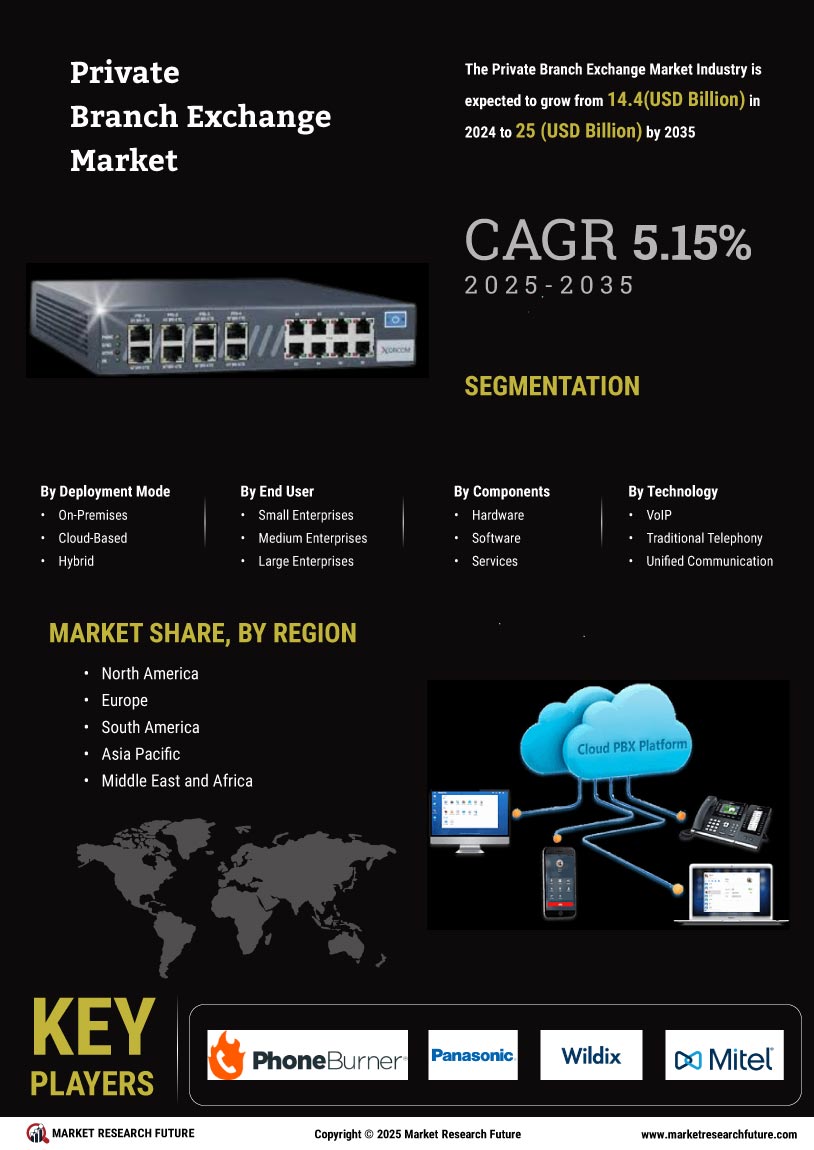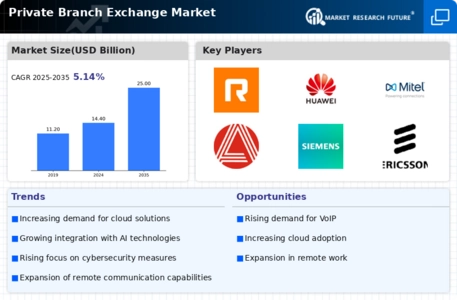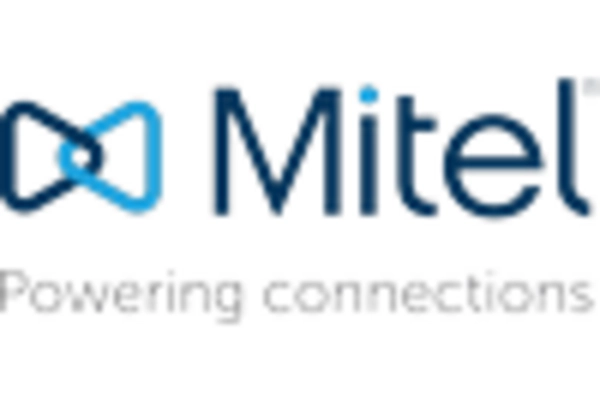Growing Focus on Remote Work Solutions
The growing focus on remote work solutions is reshaping the Private Branch Exchange Market. As organizations adapt to flexible work arrangements, the demand for reliable communication systems that support remote collaboration is on the rise. Data indicates that companies investing in PBX systems that facilitate remote work experience a 25% increase in employee productivity. This trend is prompting businesses to seek PBX solutions that offer features such as mobile access and virtual extensions. Consequently, the Private Branch Exchange Market is expected to expand as organizations prioritize communication systems that cater to the needs of a remote workforce.
Increased Regulatory Compliance Requirements
Increased regulatory compliance requirements are influencing the Private Branch Exchange Market. Organizations are facing heightened scrutiny regarding data security and privacy, necessitating the adoption of communication systems that comply with industry regulations. The market data reveals that companies investing in compliant PBX solutions are likely to reduce the risk of data breaches by up to 40%. As businesses strive to meet these regulatory demands, the Private Branch Exchange Market is anticipated to grow, driven by the need for secure and compliant communication systems that protect sensitive information.
Integration of Unified Communications Solutions
The integration of unified communications solutions is emerging as a key driver in the Private Branch Exchange Market. Organizations are recognizing the value of consolidating various communication tools into a single platform, which enhances collaboration and productivity. The market data suggests that the unified communications segment is expected to witness a CAGR of approximately 12% over the next five years. This trend is particularly relevant for enterprises looking to improve internal communication and streamline workflows. As businesses increasingly adopt unified communications, the Private Branch Exchange Market is likely to benefit from this shift towards integrated communication solutions.
Technological Advancements in Telecommunication
Technological advancements are significantly influencing the Private Branch Exchange Market. Innovations such as Voice over Internet Protocol (VoIP) and cloud-based PBX systems are reshaping how businesses communicate. These technologies offer enhanced features, including scalability, flexibility, and improved call quality. The market data indicates that the VoIP segment is projected to grow at a compound annual growth rate (CAGR) of over 15% in the coming years. As organizations increasingly adopt these advanced technologies, the Private Branch Exchange Market is poised for expansion, as businesses seek to leverage cutting-edge solutions to enhance their communication capabilities.
Rising Demand for Cost-Effective Communication Solutions
The Private Branch Exchange Market is experiencing a notable increase in demand for cost-effective communication solutions. Businesses are increasingly seeking ways to reduce operational costs while maintaining effective communication. This trend is particularly evident among small and medium-sized enterprises (SMEs) that are adopting PBX systems to streamline their communication processes. According to recent data, the adoption of PBX systems has led to a reduction in telecommunication expenses by up to 30% for many organizations. As companies prioritize budget-friendly solutions, the Private Branch Exchange Market is likely to witness sustained growth, driven by the need for efficient and economical communication tools.


















Leave a Comment